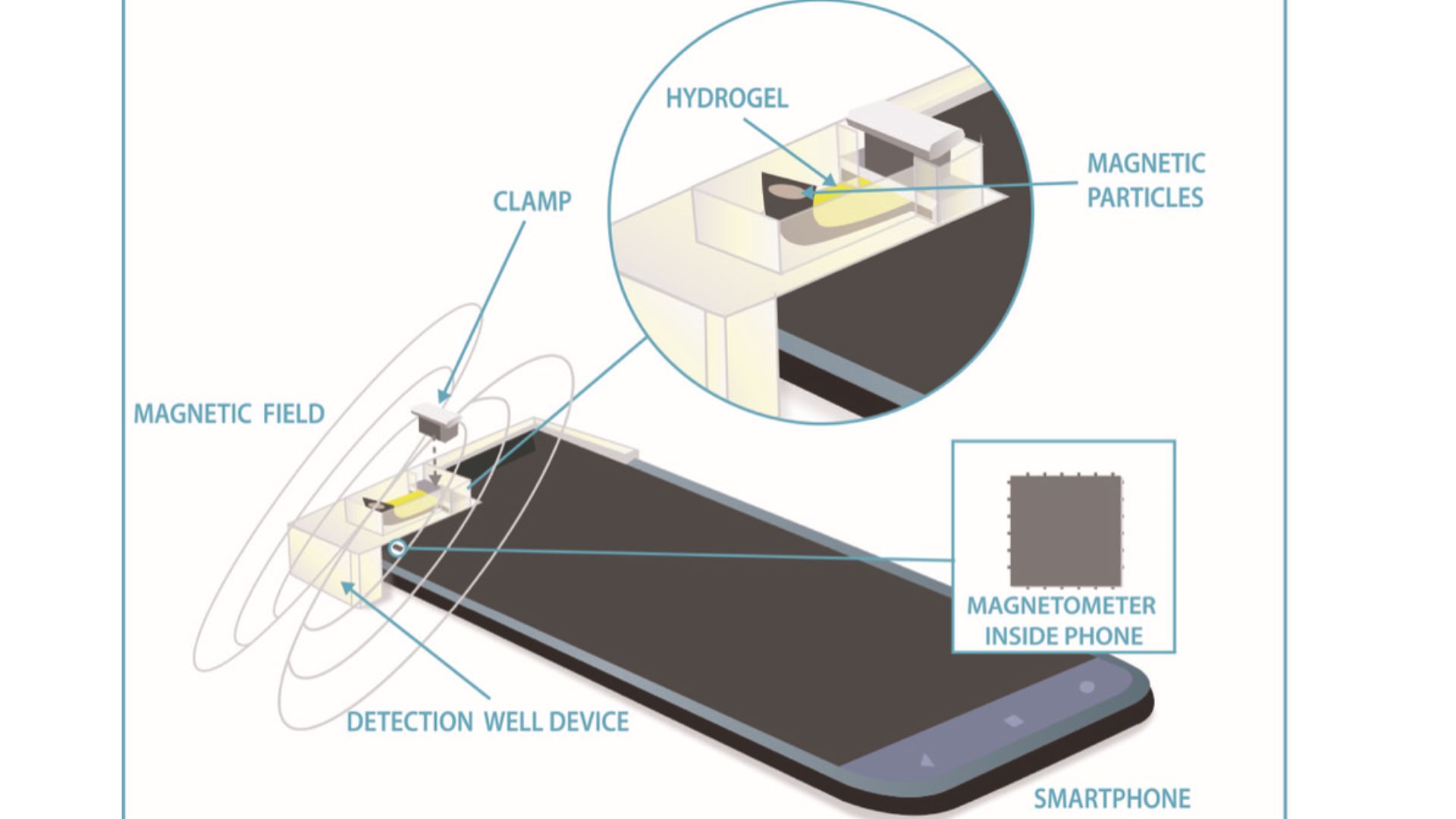Researchers develop precision glucose monitoring with cellphone compass
Scientists linked a tiny well with a hydrogel strip to a cellphone for biological sensing.

The magnetometer, or built-in compass, is found in almost all current cellphones. It detects the direction of Earth’s magnetic field and provides vital navigational information.
Thanks to new technology, a standard cellphone magnetometer now has an entirely different use.
The new system enables cell phones to measure the levels of glucose, a marker for diabetes, with excellent precision.
Several other biomedical qualities might be quickly and affordably measured using the same method.
The magnetometer combined with magnetic materials would alter its structure in response to biological or environmental stimuli. This could contribute to monitoring or diagnosing disease.
The team at the National Institute of Standards and Technology (NIST) published their research in the journal Nature Communications on March 30.
Measurements using a novel hydrogel
In their proof-of-concept investigation, scientists attached a miniature well containing the solution under examination and a strip of hydrogel to a phone. Hydrogel is a porous substance that expands upon water immersion.
The researchers constructed the hydrogel to expand or contract in response to either the presence of glucose or pH values.
Within the hydrogel, the researchers implanted microscopic magnetic particles. Variations in pH levels link to many biological problems.

The hydrogels’ expansion and contraction causes the magnetic particles to migrate in different directions relative to the magnetometer on the cell phone.
This allows the magnetometer to detect the associated changes in the magnetic field’s strength.
By using this method, the scientists were able to detect glucose concentrations down to a few millionths of a mole. A mole is a unit of measurement that represents a certain number of atoms or molecules in a substance.
According to researchers, while a drop of blood can be used for at-home glucose monitoring, such great sensitivity may eventually allow routine testing for glucose in saliva, which has a far lower concentration of sugar.
Diverse applications in testing
Hydrogels that have been engineered, or “smart,” like the ones used by the NIST team, can be made to react to a variety of different substances that medical researchers may wish to evaluate. They are also rather easy to make and reasonably inexpensive.
The team layered single layers of two distinct hydrogels in their studies; each hydrogel responded to pH or glucose by contracting and expanding at a different rate.
These bilayers enhance the hydrogels’ mobility. This made it simpler for the magnetometer to monitor variations in the strength of the magnetic field.
Researchers claim that they will soon be able to detect histamines, certain proteins, and DNA at concentrations as low as a few tens of nanomoles. That’s billionths of a mole.
That enhancement might be very beneficial. For example, detecting histamines would normally involve a 24-hour urine collection and a complex laboratory study.
Doctors commonly identify histamines in urine in concentrations ranging from around 45 to 190 nanomoles.
“An at-home test using a cellphone magnetometer sensitive to nanomolar concentrations would allow measurements to be done with much less hassle,” says Mark Ferris, a researcher at NIST, in a statement.
In a broader context, heightened sensitivity becomes crucial, particularly when limited quantities of a substance are available for testing.
According to the team’s research, a smartphone magnetometer can test pH levels at a fraction of the cost and with the same sensitivity as a benchtop meter that costs thousands of dollars.
Hydrogel test strips at scale
An environmental scientist could analyze the pH of groundwater samples on-site with greater accuracy than a litmus test strip. Similarly, home brewers and bakers might use the magnetometer to swiftly test the pH of various liquids to perfect their craft.
To ensure the hydrogel test strips have a long shelf life and can be mass-produced, engineers must devise a way to make the cellphone measurements profitable.
Ideally, engineers should design the hydrogel strips to respond more rapidly to environmental stimuli to expedite measurements.
 SHOW COMMENT ()
SHOW COMMENT ()









